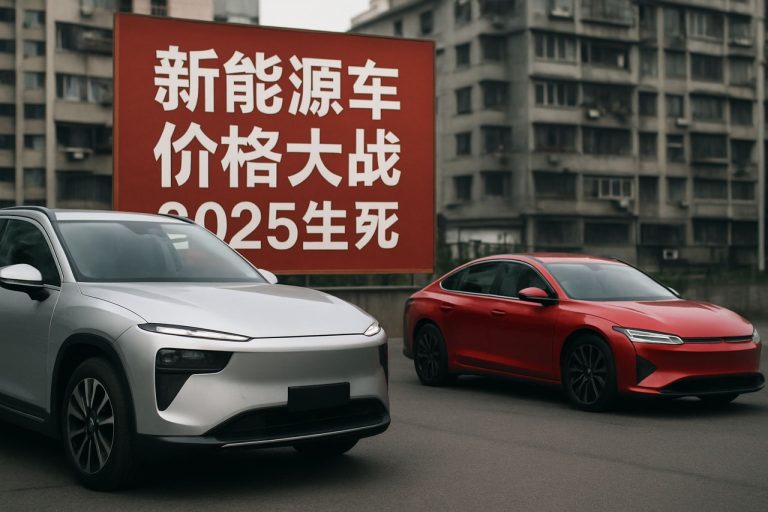
Solid-State Lidar Development Market Report 2025: In-Depth Analysis of Growth Drivers, Technology Advances, and Competitive Dynamics. Explore Key Trends, Forecasts, and Strategic Opportunities Shaping the Industry.
- Executive Summary & Market Overview
- Key Technology Trends in Solid-State Lidar
- Competitive Landscape and Leading Players
- Market Growth Forecasts (2025–2030): CAGR, Revenue, and Volume Projections
- Regional Analysis: North America, Europe, Asia-Pacific, and Rest of World
- Future Outlook: Emerging Applications and Investment Hotspots
- Challenges, Risks, and Strategic Opportunities
- Sources & References
Executive Summary & Market Overview
Solid-state lidar technology is rapidly transforming the landscape of sensing solutions for autonomous vehicles, robotics, industrial automation, and smart infrastructure. Unlike traditional mechanical lidar systems, solid-state lidar employs no moving parts, resulting in enhanced durability, reduced size, and lower manufacturing costs. As of 2025, the global solid-state lidar market is experiencing robust growth, driven by increasing demand for reliable, high-resolution 3D sensing in safety-critical applications.
According to IDTechEx, the solid-state lidar market is projected to reach multi-billion-dollar valuations by the end of the decade, with compound annual growth rates (CAGR) exceeding 30% in some forecasts. This surge is fueled by the automotive sector’s push toward higher levels of vehicle autonomy, where solid-state lidar’s compact form factor and cost-effectiveness are critical for mass-market adoption. Major automotive OEMs and Tier 1 suppliers are increasingly integrating solid-state lidar into advanced driver-assistance systems (ADAS) and next-generation vehicle platforms, as evidenced by partnerships and product launches from companies such as Continental AG and Velodyne Lidar.
Beyond automotive, solid-state lidar is gaining traction in industrial automation, smart cities, and security applications. The technology’s robustness and scalability make it suitable for deployment in harsh environments and for large-scale infrastructure projects. For instance, Ouster and Luminar Technologies have expanded their portfolios to address logistics, mapping, and surveillance markets, leveraging the advantages of solid-state architectures.
Key technological advancements in 2025 include the proliferation of flash and optical phased array (OPA) designs, which offer improved resolution, range, and reliability. These innovations are reducing the cost per unit and enabling new business models, such as lidar-as-a-service and subscription-based offerings. However, the market remains highly competitive, with ongoing consolidation and significant investment in R&D to overcome challenges related to performance in adverse weather and integration with other sensor modalities.
In summary, the solid-state lidar market in 2025 is characterized by rapid innovation, expanding application domains, and intensifying competition. The sector’s trajectory is closely tied to the evolution of autonomous systems and the broader adoption of smart technologies across industries.
Key Technology Trends in Solid-State Lidar
Solid-state lidar technology is undergoing rapid evolution, driven by the demands of automotive, robotics, and industrial automation sectors. In 2025, several key technology trends are shaping the development of solid-state lidar, focusing on performance, scalability, and cost-effectiveness.
- Transition to Chip-Scale Integration: The industry is moving toward fully integrated, chip-scale lidar solutions. Companies are leveraging silicon photonics and CMOS-compatible manufacturing to reduce size, weight, and power consumption. This integration enables mass production and cost reductions, making lidar more accessible for consumer vehicles and industrial applications. For example, Analog Devices and ams OSRAM have announced advancements in on-chip lidar architectures.
- Adoption of 1550 nm Wavelengths: There is a notable shift from 905 nm to 1550 nm laser sources. The 1550 nm wavelength allows for higher power output while remaining eye-safe, resulting in longer detection ranges and improved performance in adverse weather. This trend is evident in the product roadmaps of companies like Luminar Technologies and Aurora Innovation.
- Advancements in Beam Steering: Solid-state lidar development is increasingly focused on non-mechanical beam steering methods, such as optical phased arrays (OPA) and microelectromechanical systems (MEMS) mirrors. OPAs, in particular, offer rapid, programmable scanning with no moving parts, enhancing reliability and enabling new form factors. Avegant and AnotherBrain are among the innovators in this space.
- Enhanced Software and AI Integration: The integration of advanced signal processing and AI algorithms is improving object detection, classification, and environmental mapping. This software-driven approach is critical for enabling real-time perception in autonomous vehicles and robotics, as highlighted by NVIDIA’s DRIVE platform.
- Automotive-Grade Reliability and Scalability: As OEMs prepare for large-scale deployment, solid-state lidar is being engineered for automotive-grade reliability, with rigorous testing for vibration, temperature, and long-term durability. Partnerships between lidar suppliers and automakers, such as Volvo Cars and Luminar, are accelerating this trend.
These technology trends are collectively driving solid-state lidar toward mainstream adoption, with 2025 expected to see significant commercial deployments across automotive and industrial markets.
Competitive Landscape and Leading Players
The competitive landscape for solid-state lidar development in 2025 is characterized by rapid innovation, strategic partnerships, and a race to achieve cost-effective, automotive-grade solutions. Solid-state lidar, which eliminates moving parts in favor of semiconductor-based scanning, is increasingly favored for its durability, compactness, and scalability—key requirements for advanced driver-assistance systems (ADAS) and autonomous vehicles.
Leading players in this space include established technology firms, automotive suppliers, and a cohort of specialized startups. Velodyne Lidar and Luminar Technologies remain at the forefront, leveraging proprietary chip designs and partnerships with major automakers. Luminar, for instance, has secured production deals with Volvo Cars and Mercedes-Benz, integrating its Iris solid-state lidar into next-generation vehicles. Velodyne, meanwhile, continues to expand its portfolio with the Velarray series, targeting both automotive and industrial markets.
Another significant player, Innoviz Technologies, has made notable progress with its InnovizOne and InnovizTwo sensors, which are being adopted by BMW Group for their Level 3 autonomous driving platforms. Ouster and Cepton are also gaining traction, with Ouster focusing on digital lidar architecture and Cepton securing supply agreements with General Motors for its Ultra Cruise program.
Chinese companies are rapidly scaling up, with Hesai Technology and RoboSense both achieving significant production volumes and partnerships with domestic and international OEMs. Their ability to deliver high-performance sensors at competitive prices is intensifying global competition.
Strategic investments and mergers are shaping the landscape. For example, Continental AG and DENSO Corporation are investing heavily in in-house solid-state lidar R&D, while also collaborating with startups to accelerate commercialization. The market is also witnessing increased activity from semiconductor giants like Intel (via its Mobileye division), which is integrating lidar into its autonomous driving stack.
Overall, the 2025 solid-state lidar market is marked by aggressive technology development, deepening OEM partnerships, and a push toward mass-market adoption, with leading players vying to set industry standards and capture share in the burgeoning ADAS and autonomous vehicle sectors.
Market Growth Forecasts (2025–2030): CAGR, Revenue, and Volume Projections
The solid-state lidar market is poised for robust growth between 2025 and 2030, driven by accelerating adoption in automotive, industrial automation, and smart infrastructure sectors. According to recent projections, the global solid-state lidar market is expected to register a compound annual growth rate (CAGR) of approximately 35% during this period, outpacing traditional mechanical lidar due to advantages in cost, reliability, and scalability. Revenue forecasts indicate that the market, valued at around $1.2 billion in 2025, could surpass $5.5 billion by 2030, reflecting both increased unit shipments and higher integration rates in mass-market applications such as advanced driver-assistance systems (ADAS) and autonomous vehicles MarketsandMarkets.
Volume projections suggest a significant surge in unit sales, with annual shipments expected to grow from approximately 2 million units in 2025 to over 12 million units by 2030. This expansion is largely attributed to the automotive sector, where leading OEMs are integrating solid-state lidar into next-generation vehicles to meet safety and automation requirements. Notably, the cost per unit is anticipated to decline steadily as manufacturing processes mature and economies of scale are realized, further accelerating adoption across price-sensitive markets IDTechEx.
- Automotive Segment: By 2030, automotive applications are projected to account for over 60% of total solid-state lidar revenue, with major deployments in passenger vehicles, commercial fleets, and robotaxis.
- Industrial & Infrastructure: Non-automotive uses, including robotics, logistics, and smart city infrastructure, are expected to contribute a growing share, with a CAGR exceeding 30% in these segments.
- Regional Trends: Asia-Pacific is forecasted to lead in volume growth, driven by rapid automotive innovation in China, Japan, and South Korea, while North America and Europe will remain key markets for early adoption and premium applications Global Market Insights.
Overall, the 2025–2030 period will be characterized by rapid scaling, technological refinement, and expanding end-use cases, positioning solid-state lidar as a foundational technology in the evolution of autonomous systems and intelligent environments.
Regional Analysis: North America, Europe, Asia-Pacific, and Rest of World
In 2025, the development of solid-state LiDAR technology exhibits distinct regional dynamics, shaped by investment levels, regulatory environments, and the maturity of automotive and robotics industries.
- North America: The region, led by the United States, remains at the forefront of solid-state LiDAR innovation. Major automotive OEMs and technology firms are accelerating R&D, with a focus on cost reduction and integration for advanced driver-assistance systems (ADAS) and autonomous vehicles. Companies such as Velodyne Lidar and Luminar Technologies are expanding partnerships with automakers and mobility startups. The U.S. government’s supportive regulatory stance and significant venture capital inflows further bolster the ecosystem. North America is also witnessing early commercial deployments in logistics and smart infrastructure.
- Europe: European solid-state LiDAR development is driven by stringent safety regulations and the continent’s strong automotive sector. German and French automakers, including Continental AG and Bosch, are investing in in-house LiDAR solutions and collaborating with technology providers. The European Union’s push for Euro NCAP 2025 standards, which emphasize sensor-based safety, is accelerating adoption. Additionally, the region is exploring LiDAR applications in rail, industrial automation, and smart cities, supported by EU research grants and public-private partnerships.
- Asia-Pacific: Asia-Pacific, particularly China, is emerging as a high-growth market for solid-state LiDAR. Chinese firms such as Hesai Technology and RoboSense are scaling production and reducing costs, targeting both domestic and international OEMs. The region benefits from robust government support for autonomous driving and smart transportation initiatives. Japan and South Korea are also investing in LiDAR for robotics and industrial automation, leveraging their advanced electronics manufacturing capabilities.
- Rest of World: While adoption is slower in regions outside the major markets, there is growing interest in solid-state LiDAR for mining, agriculture, and infrastructure monitoring. Countries in the Middle East and Latin America are piloting LiDAR-based solutions for smart city and security applications, often in partnership with global technology providers.
Overall, 2025 is marked by rapid regional advancements, with North America and Asia-Pacific leading in commercialization, while Europe emphasizes regulatory-driven innovation and diversified applications. These trends are expected to shape the global competitive landscape for solid-state LiDAR in the coming years.
Future Outlook: Emerging Applications and Investment Hotspots
Looking ahead to 2025, the solid-state lidar market is poised for significant transformation, driven by both technological advancements and expanding application domains. Unlike traditional mechanical lidar, solid-state variants offer enhanced durability, compactness, and cost-effectiveness, making them increasingly attractive for mass-market deployment. The automotive sector remains the primary catalyst, with leading OEMs and Tier 1 suppliers accelerating integration of solid-state lidar into advanced driver-assistance systems (ADAS) and next-generation autonomous vehicles. Notably, companies such as Velodyne Lidar, Luminar Technologies, and Innoviz Technologies are scaling up production and forging new partnerships to meet anticipated demand surges in 2025.
Beyond automotive, emerging applications are rapidly gaining traction. In industrial automation, solid-state lidar is being adopted for robotics, warehouse automation, and smart infrastructure, where its reliability and low maintenance requirements are critical. The smart city segment is another hotspot, with lidar enabling real-time traffic monitoring, pedestrian detection, and urban mapping. Companies like Ouster and Ibeo Automotive Systems are actively piloting solutions in these domains, leveraging the technology’s scalability and robustness.
Investment activity is intensifying, with venture capital and strategic investors targeting startups and established players alike. According to IDTechEx, the global solid-state lidar market is projected to surpass $3 billion by 2025, with the bulk of new capital flowing into companies focused on chip-scale integration, cost reduction, and software-defined sensing. Notably, Asia-Pacific is emerging as a key investment hotspot, driven by aggressive government initiatives in smart mobility and infrastructure, particularly in China and South Korea.
- Automotive ADAS and autonomous vehicles remain the largest and fastest-growing application, with regulatory mandates in Europe and China accelerating adoption.
- Industrial automation and robotics are expected to account for a growing share of deployments, especially in logistics and manufacturing.
- Smart city and infrastructure projects are attracting public-private partnerships, with lidar playing a central role in urban digitalization strategies.
In summary, 2025 will mark a pivotal year for solid-state lidar, with diversified applications and robust investment flows shaping a dynamic and competitive landscape. Companies that can deliver scalable, cost-effective, and reliable solutions are likely to capture significant market share as adoption accelerates across multiple sectors.
Challenges, Risks, and Strategic Opportunities
The development of solid-state lidar technology in 2025 is marked by a complex interplay of challenges, risks, and strategic opportunities as the market matures and competition intensifies. Solid-state lidar, which eliminates moving parts to achieve greater reliability and lower costs, is seen as a critical enabler for advanced driver-assistance systems (ADAS) and autonomous vehicles. However, several hurdles remain before widespread adoption can be realized.
Challenges and Risks
- Technical Barriers: Achieving high resolution, long-range detection, and robust performance in adverse weather conditions remains a significant technical challenge. Many solid-state lidar systems still struggle to match the range and accuracy of their mechanical counterparts, particularly in fog, rain, or direct sunlight (Automotive World).
- Manufacturing Scalability: Scaling up production while maintaining quality and reducing costs is a persistent risk. The transition from prototype to mass production often reveals unforeseen reliability issues and yield challenges, impacting timelines and profitability (Luminar Technologies).
- Cost Competitiveness: While solid-state designs promise lower costs, achieving price points suitable for mass-market vehicles is still a work in progress. The pressure to reduce costs without sacrificing performance or reliability is intense, especially as automakers seek to integrate lidar into mainstream models (Velodyne Lidar).
- Market Uncertainty: The pace of regulatory approval for higher levels of vehicle autonomy and the willingness of OEMs to commit to large-scale lidar adoption remain uncertain. Shifts in regulatory frameworks or consumer acceptance could delay or accelerate market growth (IDTechEx).
Strategic Opportunities
- Automotive Partnerships: Collaborations with major automakers and Tier 1 suppliers offer solid-state lidar companies a pathway to scale and integration into production vehicles. Recent partnerships, such as those between Continental AG and lidar startups, highlight the strategic value of such alliances.
- Diversification Beyond Automotive: Expanding into industrial automation, robotics, smart infrastructure, and security markets can mitigate automotive sector risks and open new revenue streams (Ouster).
- Technological Differentiation: Companies investing in proprietary chipsets, advanced signal processing, and AI-driven perception software can create defensible competitive advantages and command premium pricing (Innoviz Technologies).
Sources & References
- IDTechEx
- Velodyne Lidar
- Ouster
- Luminar Technologies
- Analog Devices
- ams OSRAM
- Aurora Innovation
- Avegant
- NVIDIA
- Innoviz Technologies
- Ouster
- Cepton
- General Motors
- RoboSense
- MarketsandMarkets
- Global Market Insights
- Velodyne Lidar
- Luminar Technologies
- Bosch
- Innoviz Technologies
- Automotive World



